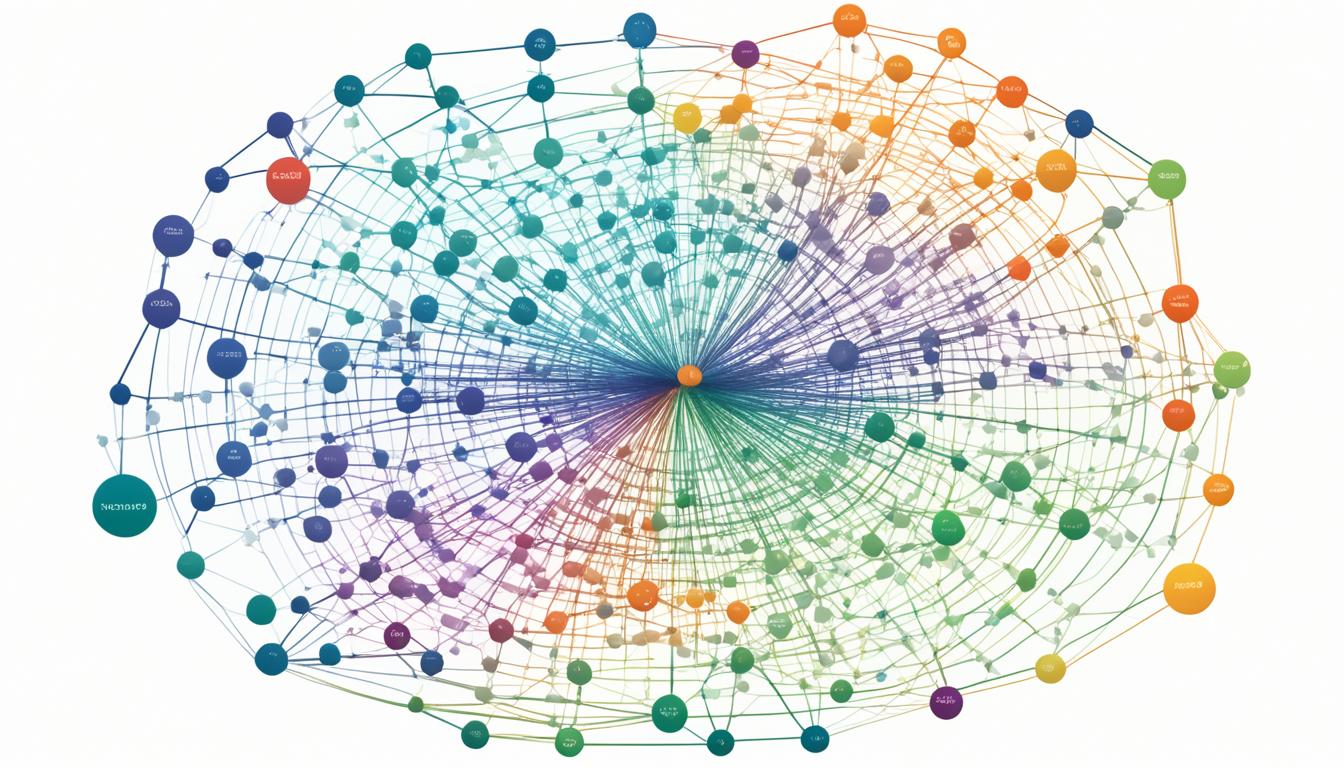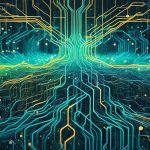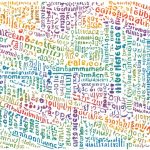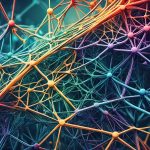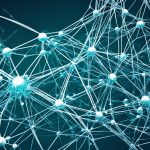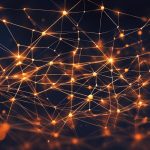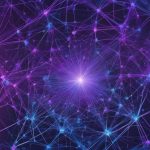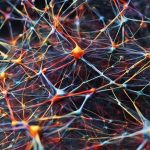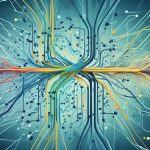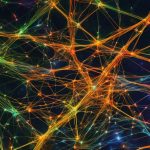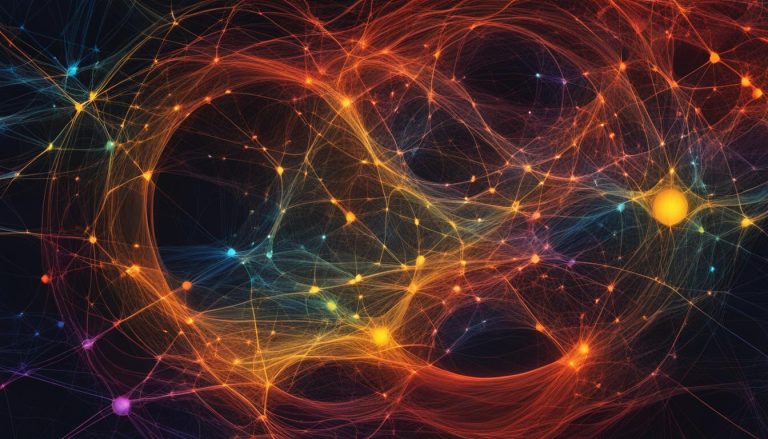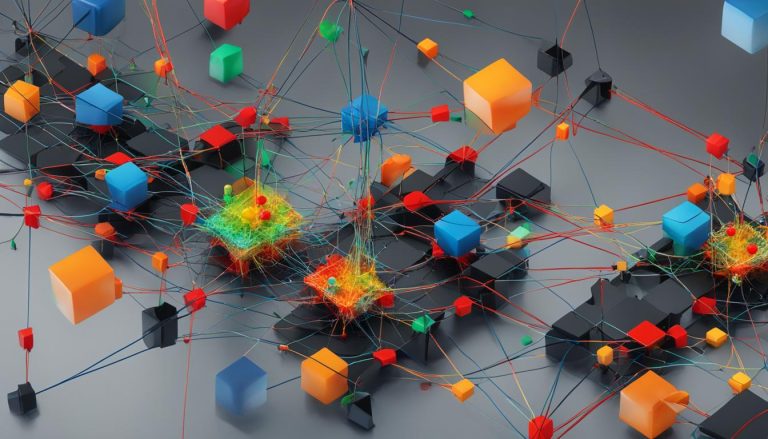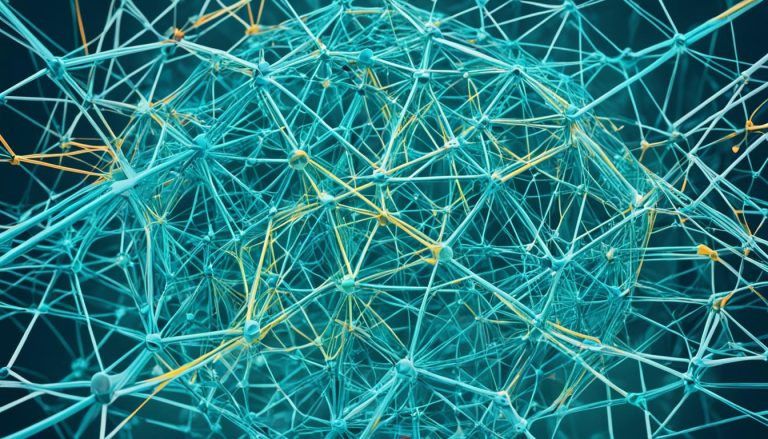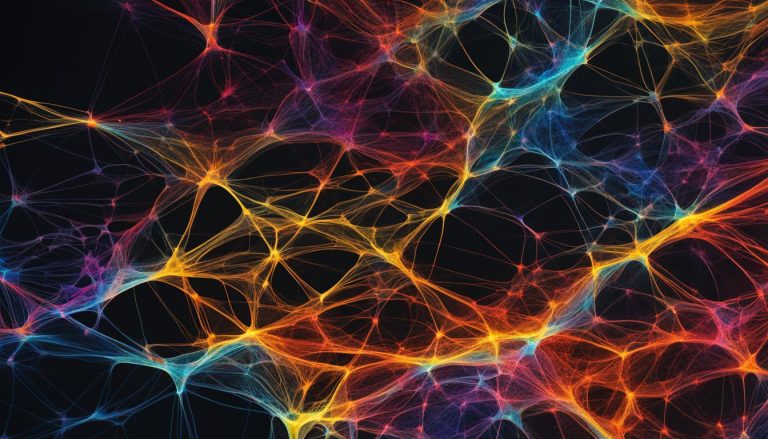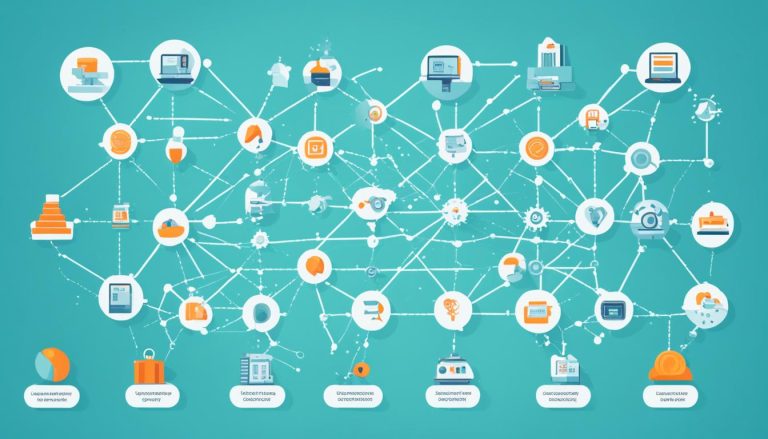Unsupervised learning is a fascinating field of study in the realm of artificial intelligence (AI), and autoencoders stand at its forefront. These remarkable neural network architectures not only offer insights into unsupervised learning but also contribute significantly to advancements in AI technology. By harnessing the power of autoencoders, researchers and practitioners can delve into the nuances of unsupervised learning, paving the way for innovative solutions and breakthroughs.
Autoencoders play an essential role in tackling the challenges of unsupervised learning. They have revolutionized data analysis by compressing large and complex input data into more manageable representations through its encoder component. This dimensionality reduction technique facilitates a deeper understanding of hidden patterns and structures within the data. The subsequent decoder component reconstructs the original input, enabling accurate data reconstruction and analysis.
Unsupervised learning algorithms have far-reaching applications across various domains, including image and text analysis, fraud detection, anomaly detection, and more. By unraveling the mysteries of autoencoders and their place in unsupervised learning, we can harness their potential to advance AI technologies and propel innovation in fields such as healthcare, finance, and cybersecurity. Join us on this insightful journey into the world of autoencoders and unsupervised learning, as we explore the intricacies of these cutting-edge algorithms.
What are Autoencoders?
Autoencoders are a type of neural network architecture that play a vital role in dimensionality reduction within unsupervised learning. These architectures consist of two key components: the encoder and the decoder. The encoder takes input data and compresses it into a lower-dimensional representation, emphasizing the most important features while discarding less relevant details. On the other hand, the decoder takes the compressed representation and reconstructs the original input from it, achieving an efficient data compression and reconstruction system.
Autoencoders are widely used in various applications such as image compression and anomaly detection due to their ability to represent complex data in a more compact form. They are particularly valuable when dealing with high-dimensional data or when trying to extract meaningful features from raw input. By leveraging the neural network architecture of autoencoders, researchers and practitioners can effectively reduce the dimensionality of data and uncover hidden patterns and insights.
How Autoencoders Work:
- The encoder compresses the input data by encoding it into a lower-dimensional representation.
- The decoder takes the compressed representation and reconstructs the original input by decoding it into its original form.
- The encoder and decoder together form a powerful system for efficiently compressing and reconstructing data.
Applications of Autoencoders:
“Autoencoders can be used for a wide range of tasks, including image compression, anomaly detection, and dimensionality reduction. They provide a valuable tool for representing complex data more efficiently and effectively.”
Autoencoders have proven to be particularly effective in image-related applications. For example, they can be used to compress large image datasets, reducing storage requirements without significant loss in image quality. By capturing the most important features of an image and discarding less significant details, autoencoders facilitate efficient image storage and transfer.
In the field of anomaly detection, autoencoders excel at identifying outliers or unusual patterns within a dataset. By training the network on normal data and comparing it to new data instances, autoencoders can rapidly identify deviations from the learned patterns, making them valuable tools in anomaly detection systems.
Furthermore, autoencoders are key players in dimensionality reduction tasks. The ability to condense high-dimensional data into a lower-dimensional representation allows for easier visualization, analysis, and understanding of complex datasets. This reduced representation can be used as input to other machine learning algorithms, facilitating more efficient and effective data analysis.
| Autoencoder Applications | Description |
|---|---|
| Image Compression | Compresses and decompresses images, reducing storage requirements. |
| Anomaly Detection | Identifies outliers or unusual patterns in datasets. |
| Dimensionality Reduction | Reduces the number of input features while preserving relevant information. |
Writing an Autoencoder from Scratch
To better understand autoencoders, let’s walk through the process of building one from scratch using Python and the TensorFlow library.
The first step is to import the required libraries, including TensorFlow. This popular Python library provides a comprehensive set of tools for building and training neural networks.
Next, we define the architecture of the autoencoder. It consists of three main components: the input layer, encoder layer, and decoder layer. The input layer takes the original data as input, while the encoder layer compresses the data into a lower-dimensional representation. The decoder layer then reconstructs the original data from the compressed representation. This encoding and decoding process allows the autoencoder to learn meaningful representations of the input data.
Autoencoders are powerful tools for data compression and reconstruction. They reduce the dimensionality of complex datasets, extracting the most important features and discarding less relevant details. This ability to compress and reconstruct data makes autoencoders valuable in various applications such as image compression, anomaly detection, and even generating realistic data.
Once we have defined the architecture, we combine the encoder and decoder into an autoencoder model. With TensorFlow, we can easily create and compile the model with just a few lines of code. We choose an optimizer and loss function to train the model effectively.
After compiling the model, we need a dataset to train the autoencoder. One commonly used dataset is the MNIST dataset, which consists of handwritten digits. By training the autoencoder on this dataset, we can evaluate its performance in reconstructing the images.
Finally, we evaluate the performance of the autoencoder by reconstructing test images. This step allows us to visually assess how well the model has learned to compress and reconstruct the data. The reconstructed images should closely resemble the original ones.
Building an autoencoder from scratch using Python and TensorFlow gives us a hands-on understanding of its inner workings. It showcases the power of autoencoders in data compression and reconstruction and their applications in various domains.
Implementation Steps:
- Import required libraries, including TensorFlow
- Define the architecture of the autoencoder
- Combine the encoder and decoder into an autoencoder model
- Compile the autoencoder model with an optimizer and loss function
- Train the autoencoder using a dataset such as MNIST
- Evaluate the performance of the autoencoder by reconstructing test images
Implementing an autoencoder from scratch using Python and TensorFlow provides valuable insights into the inner workings of this unsupervised learning algorithm. By understanding the process of building and training an autoencoder, we can unlock its potential in data compression, reconstruction, and various other applications.
Introduction to Variational Autoencoders (VAEs)
Variational Autoencoders (VAEs) are an extension of autoencoders that introduce generative capabilities to the model. While traditional autoencoders focus on compressing and reconstructing data, VAEs go a step further by enabling the generation of new, similar data points.
VAEs utilize probabilistic encoding and decoding techniques, mapping input data to probability distributions in the latent space. This allows for the exploration of the underlying data distribution and the generation of diverse and variable data.
VAEs find extensive application in the field of machine learning due to their ability to generate new data points. They are widely used in tasks such as image synthesis, data augmentation, and natural language processing. By leveraging VAEs, researchers and practitioners can push the boundaries of machine learning and unleash the power of generative models.
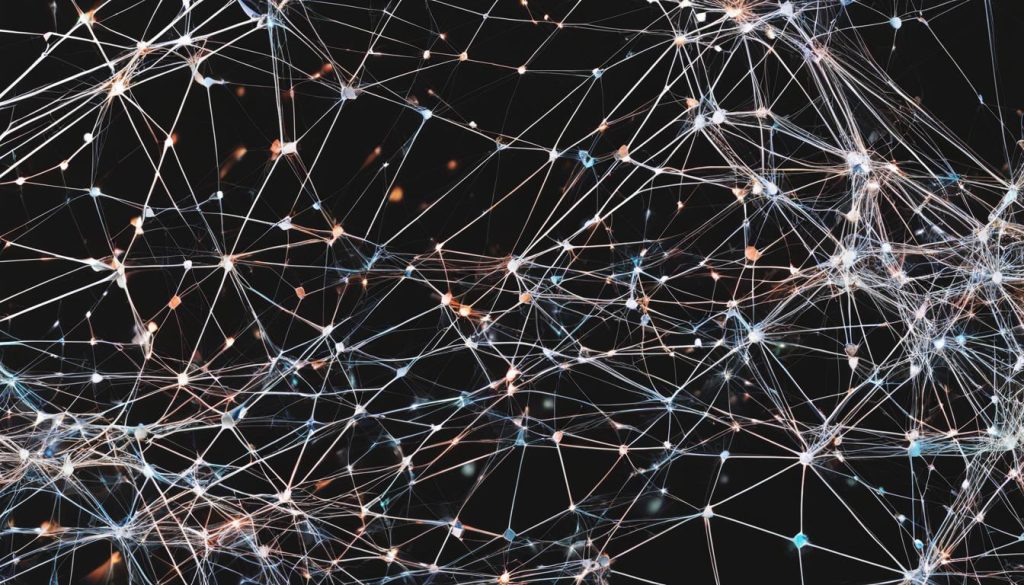
Qualities of Variational Autoencoders (VAEs)
“Variational Autoencoders provide a unique set of qualities that make them a valuable tool in the field of machine learning.”
One of the key qualities of VAEs is their generative capability. By modeling the data distribution in the latent space, VAEs are able to sample from the learned distribution and generate new data points that exhibit similar characteristics to the training data.
Furthermore, VAEs allow for the interpolation and exploration of the latent space. By smoothly transitioning between different points in the latent space, VAEs can generate continuous variations of the input data, enabling smooth transitions between different data instances.
VAEs also offer a way to disentangle the latent representations. By imposing certain constraints on the distribution of the latent space, VAEs can isolate distinct factors of variation in the data, allowing for the independent manipulation and control of these factors.
Using PyTorch for Variational Autoencoders
“PyTorch provides a powerful framework for implementing and training Variational Autoencoders.”
PyTorch, a popular open-source machine learning library, offers a comprehensive toolkit for building and training VAEs. Its flexible and intuitive syntax allows developers to easily define the VAE architecture, specify loss functions, and optimize the model parameters.
The PyTorch ecosystem also provides an extensive collection of pre-trained models and datasets, allowing researchers and developers to leverage existing resources and accelerate their VAE projects.
With PyTorch, implementing and experimenting with VAEs becomes a seamless and efficient process, empowering practitioners to explore the depths of generative modeling in machine learning.
Comparison of Variational Autoencoders (VAEs) and Traditional Autoencoders
| Features | Variational Autoencoders (VAEs) | Traditional Autoencoders |
|---|---|---|
| Compression and Reconstruction | ✅ | ✅ |
| Data Generation | ✅ | ❌ |
| Latent Space Exploration | ✅ | ❌ |
| Disentangled Latent Representations | ✅ | ❌ |
As shown in the table above, VAEs offer additional capabilities compared to traditional autoencoders. While both can compress and reconstruct data, VAEs excel in data generation, latent space exploration, and disentangling latent representations.
Mathematical Concepts behind VAEs
Variational Autoencoders (VAEs) are an intriguing extension of autoencoders that leverage probabilistic graphical models and Bayesian inference. These mathematical concepts form the foundation of VAEs, enabling their generative and regularization capabilities in unsupervised learning.
One of the key mathematical concepts behind VAEs is the joint probability distribution of the observed data and latent variables. This distribution captures the relationship between the input data and the underlying latent representations. By modeling this joint distribution, VAEs learn to capture the essential features of the data while discarding noise and irrelevant details.
Another essential concept is the approximate posterior distribution. In VAEs, the encoder maps the input data to a distribution in the latent space. This mapping allows for the extraction of meaningful latent representations and facilitates the generative process of VAEs.
The transformation from deterministic encoding to distributional encoding in the latent space is a crucial aspect of VAEs. By introducing randomness during the encoding process, VAEs promote exploration and diversity in the generated data, making them excellent candidates for generative modeling tasks.
VAEs utilize the Evidence Lower Bound (ELBO) as their loss function. The ELBO combines two components: the reconstruction loss, which measures the fidelity of the reconstructed data to the original input, and the Kullback–Leibler (KL) divergence, which quantifies the difference between the approximate posterior and a predefined prior distribution. By optimizing the ELBO, VAEs strike a balance between accurate reconstruction and regularization, allowing for effective data compression and reconstruction.
To summarize, the mathematical concepts underlying VAEs, such as joint probability distributions, approximate posteriors, and transformation from deterministic to distributional encoding, enable their generative power in unsupervised learning. By leveraging these concepts, VAEs facilitate the exploration and manipulation of latent representations, offering a versatile tool for tasks such as image synthesis, data augmentation, and natural language processing.

| Traditional Autoencoders | Variational Autoencoders (VAEs) | |
|---|---|---|
| Encoding Process | Deterministic | Probabilistic |
| Latent Space | Continuous or Discrete | Continuous and Distributional |
| Generative Capability | No | Yes |
| Regularization | None or Implicit | Explicit |
Unveiling the Potential of Unsupervised Learning Algorithms
Unsupervised learning algorithms are a crucial tool for data scientists and AI researchers seeking to uncover hidden structures within datasets and gain valuable insights. These algorithms play a particularly important role in scenarios where obtaining labeled data is challenging or time-consuming. By applying unsupervised learning algorithms, researchers can extract meaningful information, discover patterns, and make data-driven decisions.
There are various types of unsupervised learning algorithms, each with its unique qualities and applications. Clustering algorithms, for example, group similar data points together based on shared characteristics or proximity. This enables tasks such as customer segmentation or identification of clusters in social network analysis.
Dimensionality reduction algorithms, on the other hand, aim to reduce the number of input variables while preserving the important information. By representing data in a lower-dimensional space, these algorithms allow for easier visualization and more efficient processing. They are widely used in applications such as image and text analysis, where high-dimensional data can be computationally expensive to handle.
Generative models, including popular techniques such as variational autoencoders (VAEs) and generative adversarial networks (GANs), are another powerful class of unsupervised learning algorithms. These models learn the underlying distribution of the data and can generate new samples that are similar to the training data. They have applications in various domains, including image synthesis, data augmentation, and natural language processing.
By understanding the potential of unsupervised learning algorithms, researchers and practitioners can unlock new possibilities in their data analysis workflows. These algorithms provide valuable insights into hidden structures, aid in exploratory data analysis, and contribute to the advancement of AI technology across industries.
Unsupervised learning algorithms are an essential tool for data-driven decision making. They enable us to delve into the hidden structures of our datasets, uncover valuable insights that were previously hidden, and make data-driven decisions.
To illustrate the capabilities of unsupervised learning algorithms, consider the example of customer segmentation. By applying clustering algorithms to customer data, businesses can identify distinct groups of customers with similar behaviors and preferences. This information can then be used to tailor marketing strategies or product offerings to specific customer segments, improving customer satisfaction and driving business growth.
In summary, unsupervised learning algorithms, such as clustering, dimensionality reduction, and generative models, offer powerful methods for extracting knowledge from unlabeled datasets. These algorithms have diverse applications and significant potential in various domains, facilitating data-driven decision making and advancing artificial intelligence technology.
The Benefits of Unsupervised Learning Algorithms
Unsupervised learning algorithms offer several key benefits:
- Discovering hidden structures: Unsupervised learning algorithms can identify patterns and structures in data that may not be immediately apparent. By uncovering these hidden relationships, researchers can gain valuable insights and make informed decisions.
- Efficient dimensionality reduction: Dimensionality reduction algorithms reduce the number of input variables, simplifying data analysis and visualization. This enables researchers to focus on the most relevant features and improve computational efficiency.
- Data generation and augmentation: Generative models can create new data samples that are similar to the training data. This capability is useful for tasks such as data augmentation, where additional training examples are needed to improve model performance.
Conclusion
Autoencoders, with their ingenious neural network architectures, offer remarkable data compression and reconstruction capabilities. They play a critical role in unsupervised learning and find wide applications, ranging from image compression to anomaly detection. Variational Autoencoders (VAEs) take this a step further by enabling generative modeling. By delving into the core principles and mathematical concepts underpinning autoencoders and VAEs, we unlock their true potential in unsupervised learning. These powerful algorithms not only advance artificial intelligence but also drive innovation in various fields.
FAQ
What are autoencoders?
Autoencoders are a type of neural network architecture used for dimensionality reduction in unsupervised learning. They consist of an encoder and a decoder and are designed to compress input data into a lower-dimensional representation and then reconstruct the original input from that representation.
How do I build an autoencoder from scratch using Python and TensorFlow?
To build an autoencoder from scratch, you first need to import the required libraries, including TensorFlow. Then, define the architecture of the autoencoder, including the input layer, encoder layer, and decoder layer. Combine the encoder and decoder into an autoencoder model and compile the model with an optimizer and loss function. Train the autoencoder using a dataset, such as the MNIST dataset, and evaluate its performance by reconstructing test images.
What are variational autoencoders (VAEs) and how do they differ from autoencoders?
Variational autoencoders (VAEs) are an extension of autoencoders that add generative capabilities to the model. VAEs not only compress and reconstruct data but also generate new, similar data points. They use probabilistic encoding and decoding, mapping the input data to probability distributions in the latent space.
What are the mathematical concepts behind variational autoencoders (VAEs)?
The key mathematical concepts behind VAEs include the joint probability distribution of the observed data and latent variables, the approximate posterior distribution, and the transformation from deterministic encoding to distributional encoding in the latent space. VAEs utilize the Evidence Lower Bound (ELBO) as their loss function, combining reconstruction loss and KL divergence.
What role do unsupervised learning algorithms play?
Unsupervised learning algorithms play a crucial role in discovering hidden structures within datasets and extracting meaningful insights. They are particularly valuable when obtaining labeled data is challenging or time-consuming. Unsupervised learning algorithms can be used for various tasks such as clustering, dimensionality reduction, association rule learning, and generative modeling.
What applications can autoencoders and VAEs be used for?
Autoencoders and VAEs have a wide range of applications. Autoencoders are commonly used for tasks such as image compression and anomaly detection. VAEs, with their generative capabilities, are used in machine learning tasks like image synthesis, data augmentation, and natural language processing.
What is the significance of autoencoders in the field of artificial intelligence?
Autoencoders have a pivotal role in unsupervised learning and have contributed to advancements in artificial intelligence. Their ability to compress and reconstruct data efficiently has enabled various applications across different domains. Autoencoders continue to drive innovation and facilitate the development of intelligent systems.

